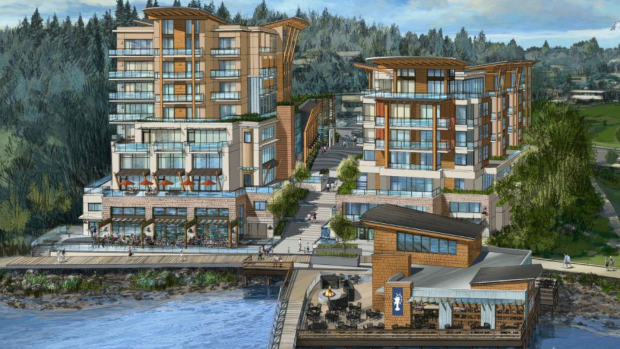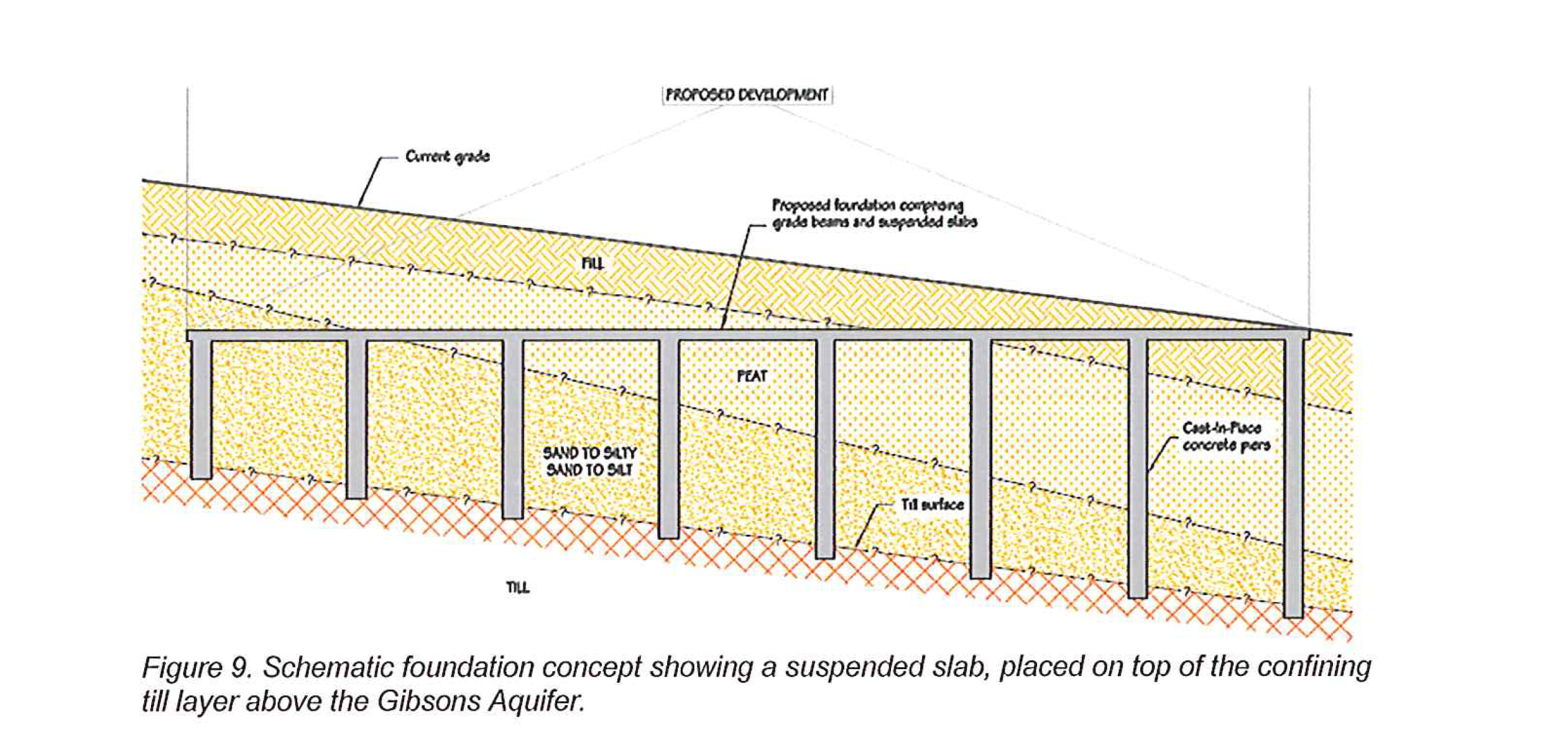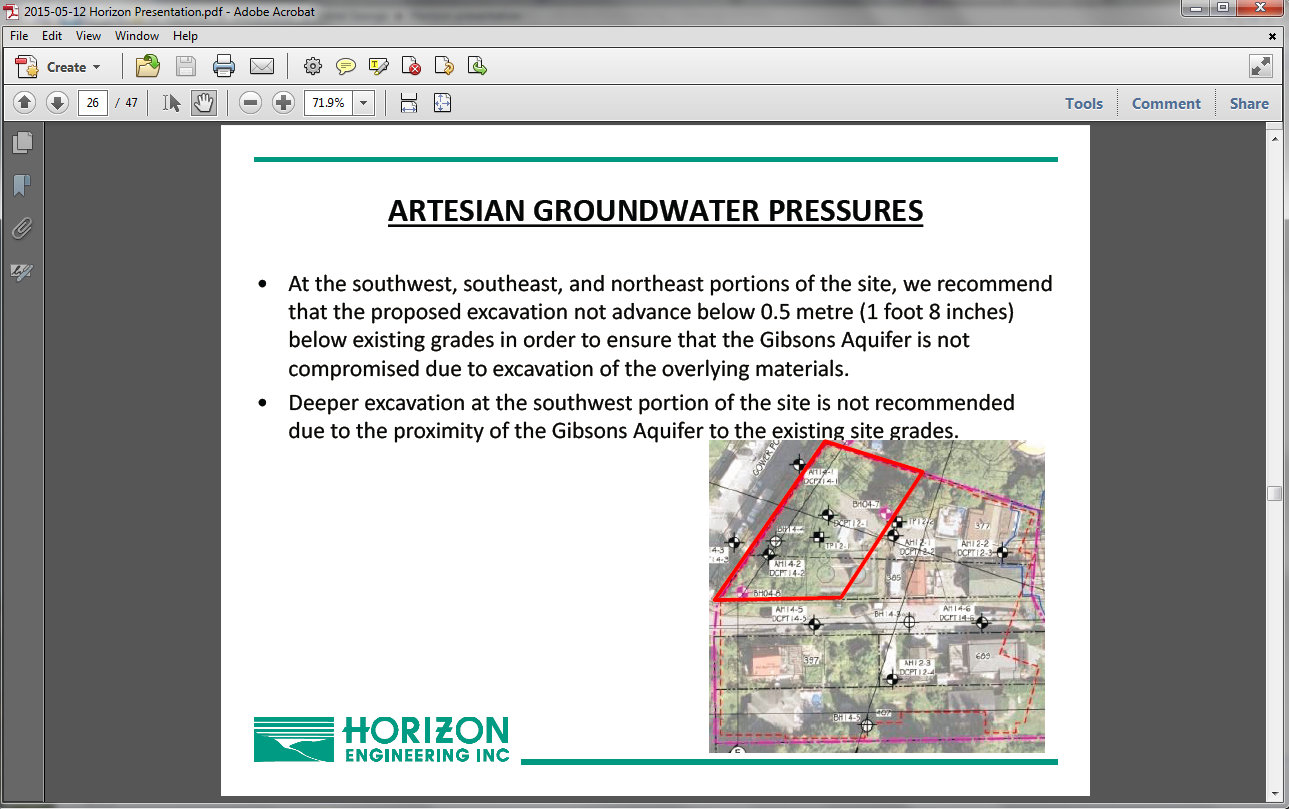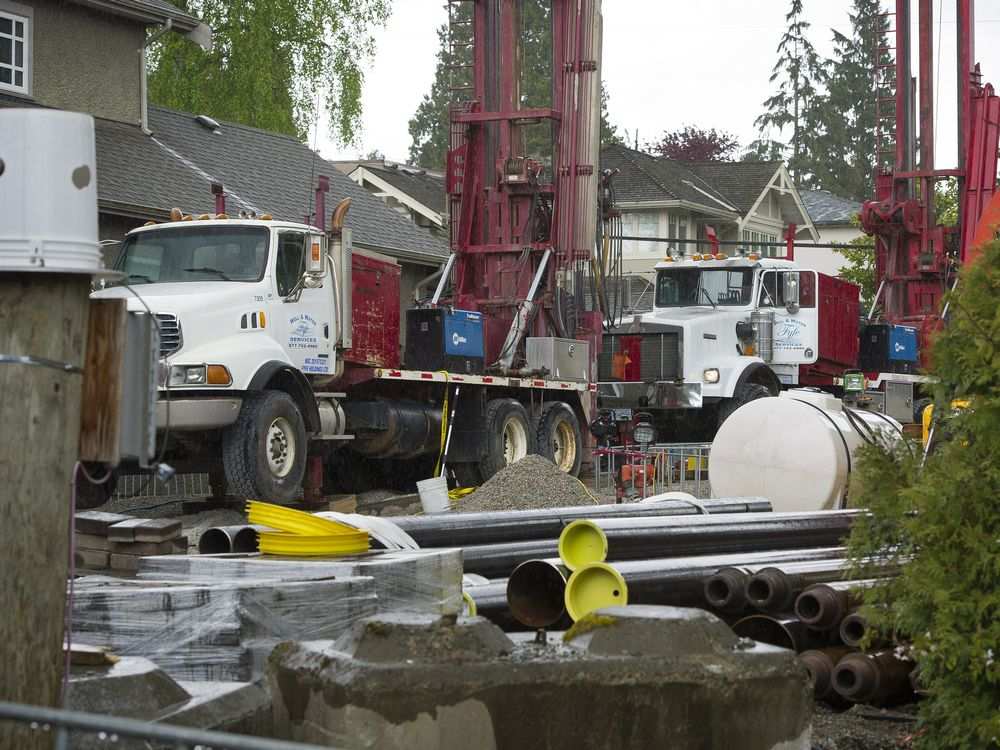
Gibsons town planner Andre Boel has pointed out three inaccuracies in this story. This is a new version with new facts.
Attachments to the agenda for the special council meeting about the environmental permit for the George and the aquifer refer to a key memo by Horizon Engineering. But the document itself is not included, environmental consultant Dr. Andre Sobolewski says. He wonders if the aquifer is at risk.
(by Newsdesk)
Council will consider an environmental development permit for the George Hotel and Residences project at a special council meeting Monday July 31. They will discuss a plan to dig out contamination to a depth which environmental consultant Dr. Andre Sobolewski believes could put the aquifer at risk.
The 2013 application for the George included a proposed raft foundation that would stay above the aquifer, Boel points out.

Excavation into the aquifer was never proposed, he says. In May 2015, Horizon Engineering, hired by developer Klaus Fuerniss, provided more detailed specifications for the foundation design, identifying certain excavation limits to ensure the 2013 plan of a raft foundation above the aquifer could be constructed, Boel says. The town hired geotechnical and environment engineering firm Levelton Consultants, and environmental and hydrogeology consulting firm Waterline to review Horizon’s report.
The Town did not set a maximum excavation depth in the OCP Aquifer Development Permit Area #9, Boel says. Rather, the depth and method of excavations for projects is reviewed under this Development Permit without a specific limit because conditions vary from site to site, according to Boel. The only spot where 1.5 m is mentioned is in relation to an exemption for single family projects which can forego an assessment if the excavation is less than 1.5m, he says. Here is a screenshot of the OCP Aquifer Development Permit Area:


However, in a report dated April 7, 2015, Horizon Engineering stated that near the waterfront, the site should not be excavated to a depth of more than 0.5 metres to ensure that the aquifer is not compromised.

Boel points out that Horizon Engineering has also identified an area where excavation could be 5.0 m below grade. Keystone Environmental, the consulting firm hired by the developer to address contamination issues at he site, refers to this information in its July 2017 remediation plan which is attached to the agenda for the special council meeting:
 The site of the proposed George project is contaminated with many contaminants, including a highly toxic substance called tributyltin (TBT) from boat maintenance at the now-closed Hyak Marine Services.
The site of the proposed George project is contaminated with many contaminants, including a highly toxic substance called tributyltin (TBT) from boat maintenance at the now-closed Hyak Marine Services.
On June 29, 2017, Keystone Environmental sent the remedial plan to Vincent Hanemayer, senior contaminated sites officer with the Ministry of the Environment.
On July 12, 2017 the Ministry confirmed by letter that it had accepted the plan, including maximum excavation depths of 2 metres:

The May 2017 Horizon report mentioned in the Ministry’s letter is not attached to the agenda, Sobolewski says.
And the staff report on the geotechnical and aquifer review results for the George project mentions “a more detailed risk assessment contingency plan,” but the document is not included.

The excavation has Sobolewski concerned about the aquifer. “I think we deserve to know how they arrived at this decision,” he says. “This document was not attached.”
Sobolewski says he hopes the assessment by Horizon, the developer’s engineering firm, is adequate. “The decision to excavate to a depth of 2 metres is based on a risk assessment. Without seeing this document, without hearing from these experts, we have to trust the town. But it has me worried.”
Sobolewski has closely followed the breach of an aquifer in Vancouver, where un-permitted drilling on a residential lot caused a massive aquifer flood in September 2015. The hole could not be capped and has spewed two million litres of water a day for almost two years. The city won’t know until August 8 whether the latest containment attempt has been succesful. Sobolewski says that the method mentioned in the staff report (see below) to stop a potential breach of the Gibsons aquifer did not work in Vancouver.


I appreciate the diligent work done by concerned citizens and reported by the Clarion. Other communities have gone to great lengths to safeguard the natural environment that rejuvenate and ground its citizens – helping us maintain sanity in a world spinning out of sync with nature herself. How can it be that more and more communities are ignoring its citizens for what they hope will be a quick buck. The time for expecting more more more is better better better is no longer being supported by valued thinkers. We ignored Silent Spring. We ignore anyone who has the temerity to point out the multiplying detrimental effects of the practices that are allowing massive destruction with far reaching and irreversible results. Remember when our drinking water was clean and we could drink from any stream. Perhaps we should look to Iceland and other conscious countries.